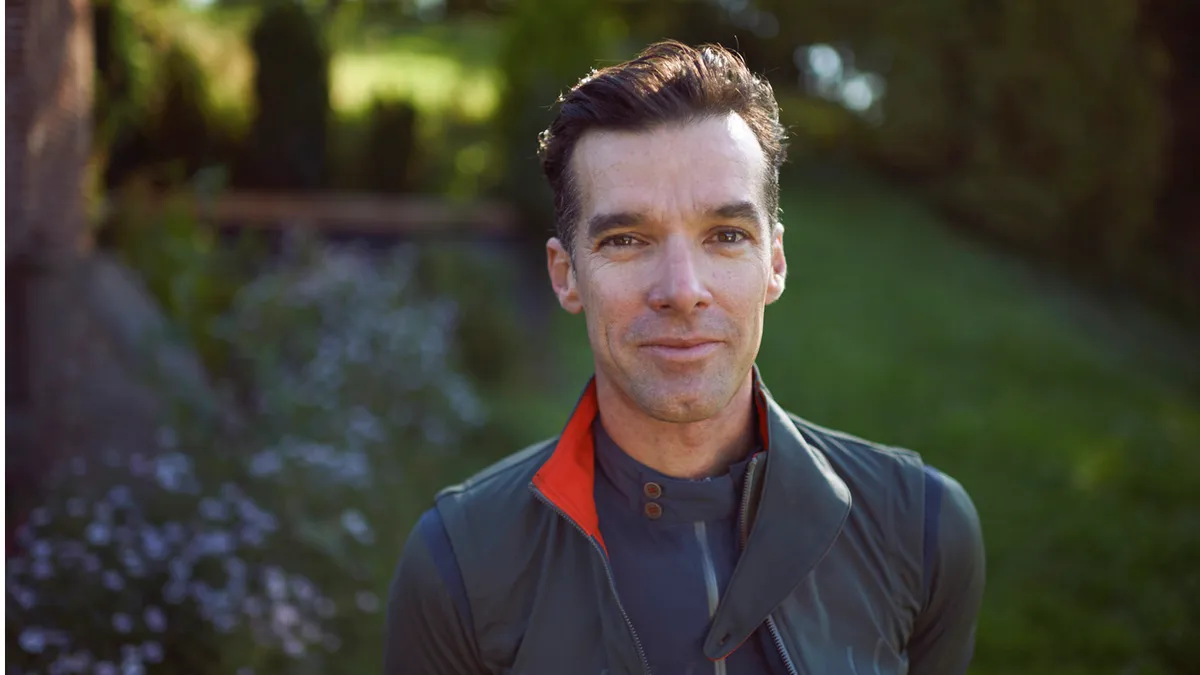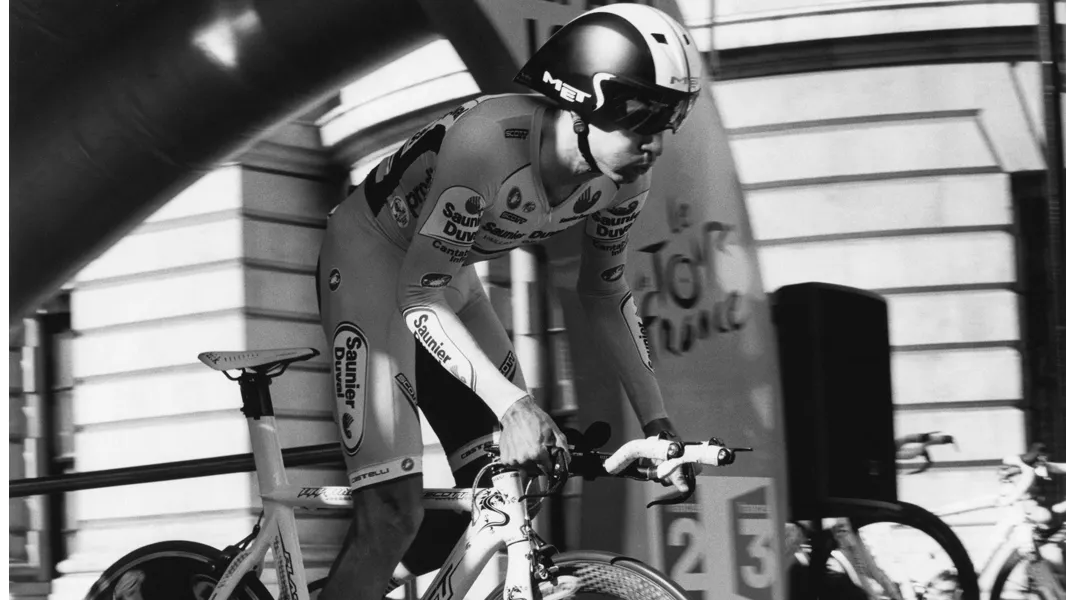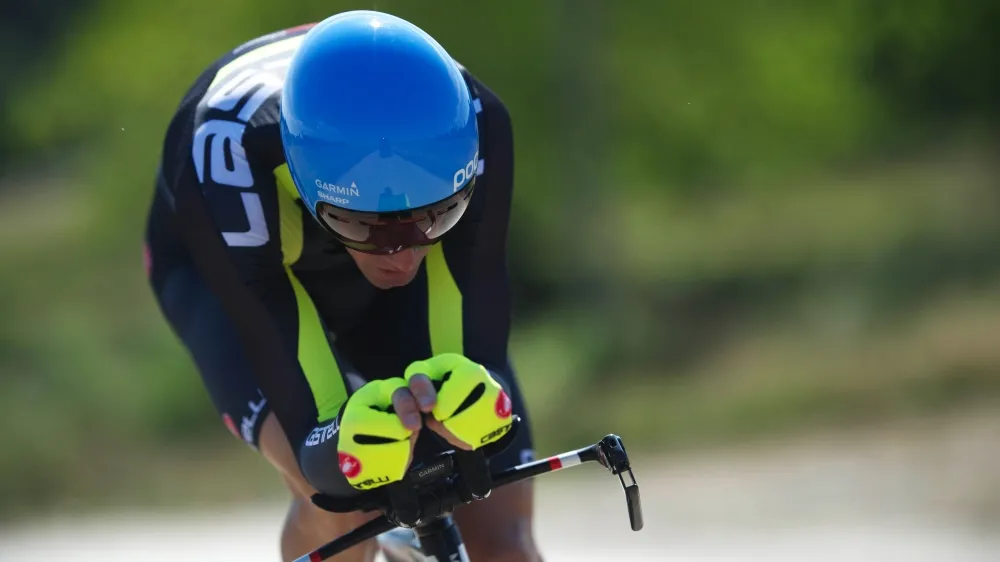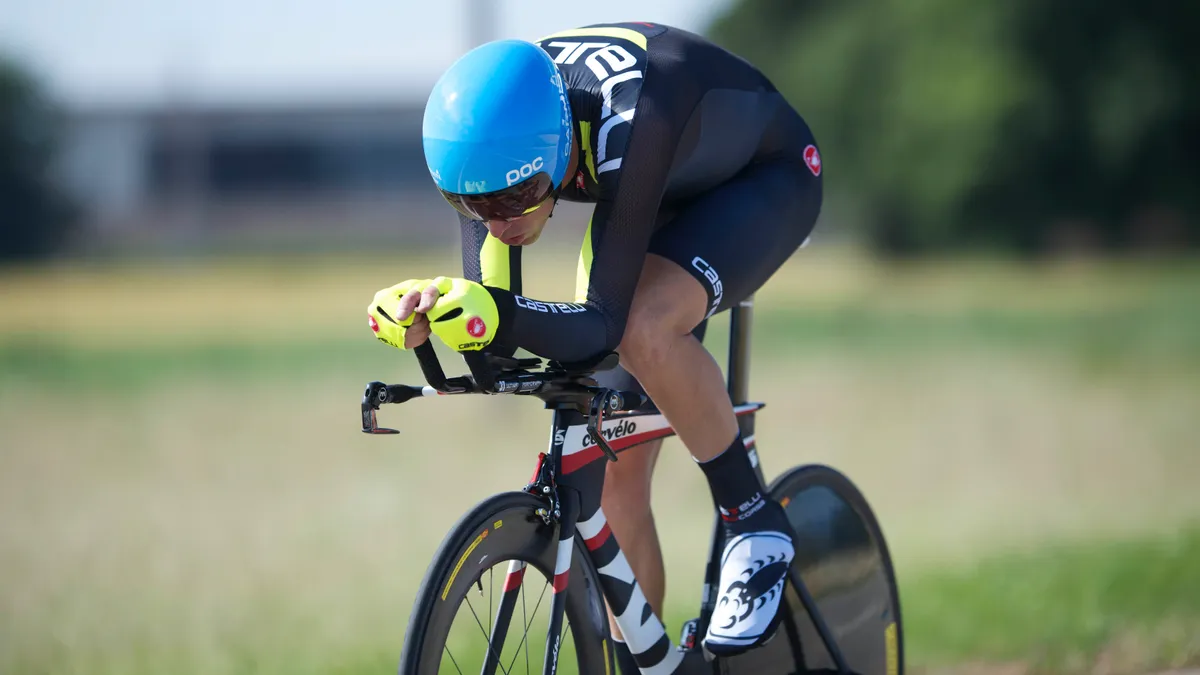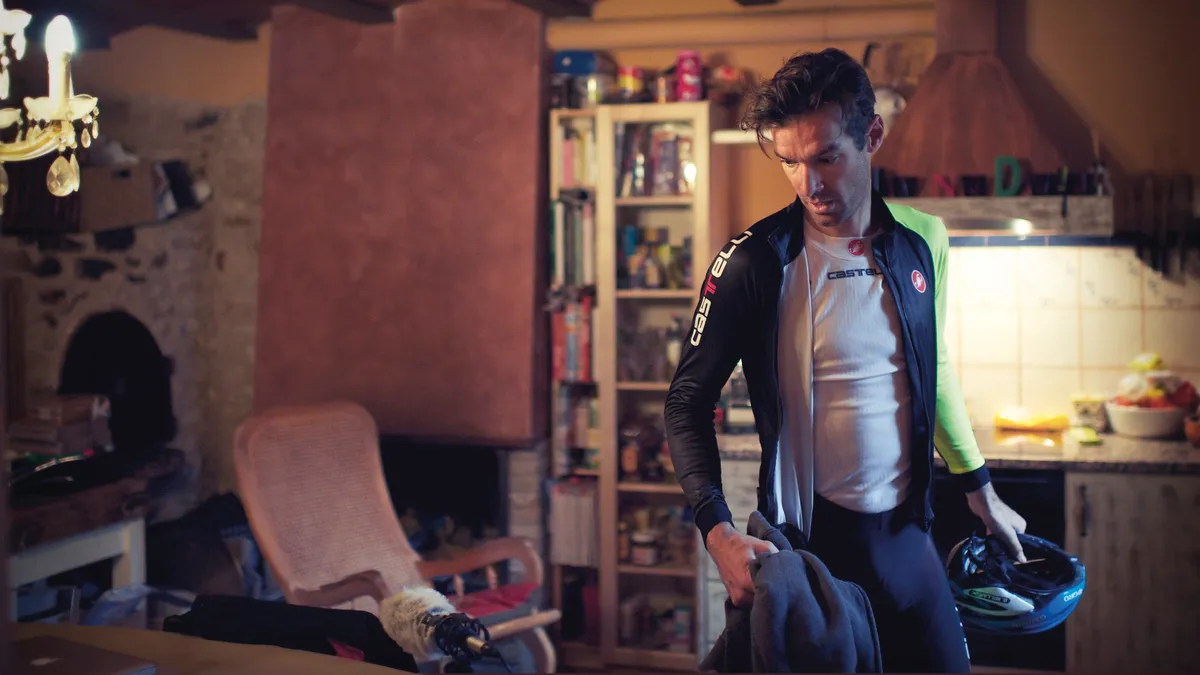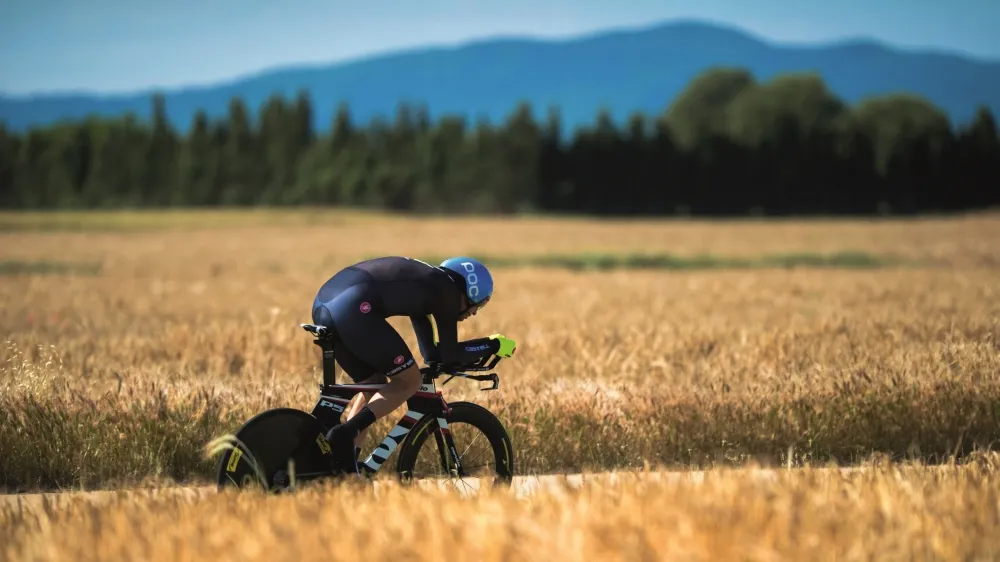This is a promoted post in association with David Millar and A1 Members.
With numerous Grand Tour stage victories and the leader’s jersey in all three, David Millar has to have a great deal of knowledge on how to become a great bike racer. Now retired from the professional game, David has taken time out to describe the time trial system he developed over the course of his career and shares it in his ‘David Millar TT System’. Produced in conjunction with A1 Coaching, there is something in this for all riders, along with added insight in the associated free 4-Part Video Training Series.
So far I’ve discussed the need for a good aerodynamic position, along with basic modifications or additions to equipment. These give you the potential to go faster. But how can you unleash this potential effectively and convert it into better times?
Planning for the course
How you transform your potential for speed into optimum performance is dependent on the particular course you have chosen to target and how you adapt your pacing strategy to the characteristics of that course.
This is important because time trialling isn’t just an abstract exercise in speed: it must be about a clearly defined performance objective for each course. This, in turn, means having a particular strategy to suit your target time for that course.
Each TT is unique once you go outside an indoor velodrome. This means you must do your research on the uniqueness of the course and, from that, develop a clear strategy to achieve your target time. Again, that time can’t just be plucked out of thin air – or based on your ‘average’ speed – because you need to train and plan according to the course’s peculiarities.
As I described in my first blog, my introduction to time trialling was on my local High Wycombe Club’s Longwick-10. I did 23:58mins in that first attempt and I was over the moon, getting over the magic threshold of 25mph for the first time.
I then set the bar below 22mins and, once I achieved that, I re-set it again at 21mins. That target took me two years to achieve, and a further 13 years to eventually get the course record of 19:04mins.
The point is, I based my time goals on that particular course and the more I did it the more I understood how to pace it and deal with the effect of the weather. Improved fitness and technique obviously came into it but, all-in-all, it took 13 years to master just one course and set the record: an illustration that persistence in analysis and planning does pay off.
null
Segmenting the course – micro goals
Part of the strategy for mastering the Longwick-10 was to break it up into chunks. Then, it went from being a solid 10-mile effort to becoming a series of micro goals within the macro objective.
This had a number of key advantages: it seemed to get shorter over time and, having individualised plans for the peculiarities of each segment, helped refine the strategy and brought the time down significantly.
Here’s how to go about practicing this.
Ideally, find a course near you that you can train on regularly, to the point of it becoming as familiar as the back of your hand. Learn each minute change in gradient, which parts are most sheltered or exposed in different wind conditions, which parts have the faster surface, and so on.
By riding it repeatedly, and internalising all the variables, you’ll imprint it in your mind and begin to do what I was able to do with the Longwick 10: break it up into segments that you can tackle separately from the whole.
This visualisation, or the ability to ‘see’ the course in your mind’s eye with all its variables, should become an integral part of your time trialling: having a visual rehearsal of the segments, a pacing and position strategy for each, anticipation of how you should feel, and so on.
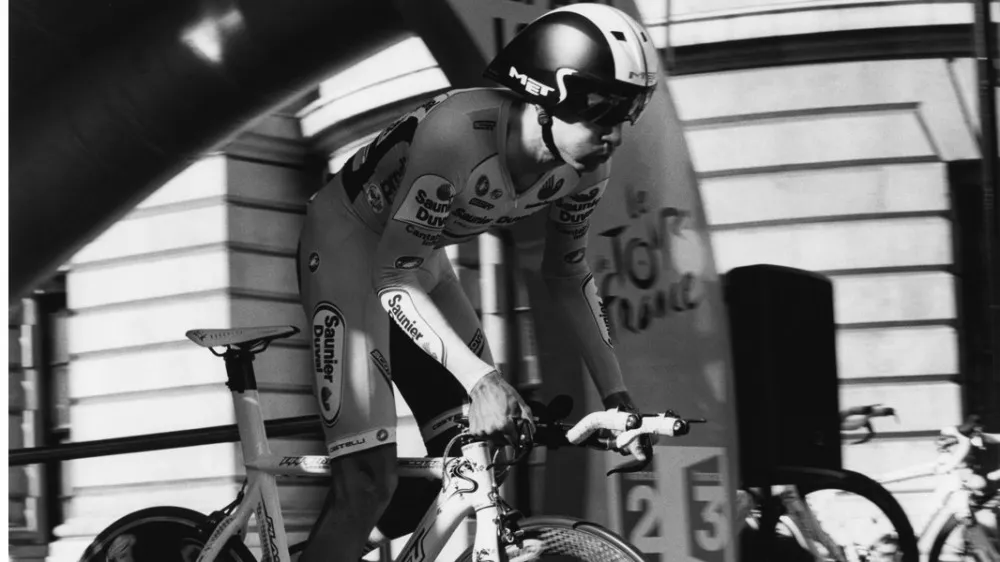
Relaxation and rationalisation – releasing potential
By practicing this segmentation and visualisation over and over again, you will find yourself much more mentally relaxed and prepared when it comes to race day. With this mental preparation you’ll be able to say to yourself: “I know what I am going to do.”
Developing and managing this sense of calmness and relaxation is also central to releasing your potential. It reduces fear and nervous tension, and the energy and adrenaline which they absorb. Your time trial should be ridden in a calm state of mind and, even though counter-intuitive, it should also be ridden with a calm and relaxed body.
This also takes practice – try each of these in turn during training and when you are at your optimum threshold output: wiggle your fingers; release the tension from your shoulders; consciously feel the force where your foot interfaces with your shoe; feel each breath going deep into your diaphragm.
This calmness, derived from rational thinking and practice, will help you go faster than relying on emotional, brute, impulsive, force.
Letting the pain come – effort, speed and pacing
Once you have understood and bought-into the points I have made up to now, you are ready for the practicalities of pacing your time trial.
Pacing, as I have been emphasising, is completely course dependent. If it was a pan-flat course, with consistent wind and direction (which very few, if any, are!), then it would be relatively easy: you’d work out the required average speed for your target time and simply sit on that for the entire duration. Fortunately, the world isn’t perfect or time trials would be really, really boring.
Then again, this example of the theoretically consistent course would teach you something also, because even simply sitting on your target average speed for the duration would still be very hard to pace.
This is because the body is very good at feeding back to our brain how easy or hard the effort feels, but it is quite poor in giving us an accurate sense of our output, relative to that effort.
Therefore, with this limitation in equating perception with actual output, you are likely to set off feeling the effort at your target speed to be too slow and you’d think to yourself: “I feel amazing, this is too easy, I’m gonna go faster.”
This is a common mistake, even at the professional level. This is why it’s important to remain rational and stick to your race plan. If paced properly, the first quarter will feel relatively easy and then the load will begin to accumulate and take its toll. We have a saying: “Don’t chase the pain, let it come to you.”
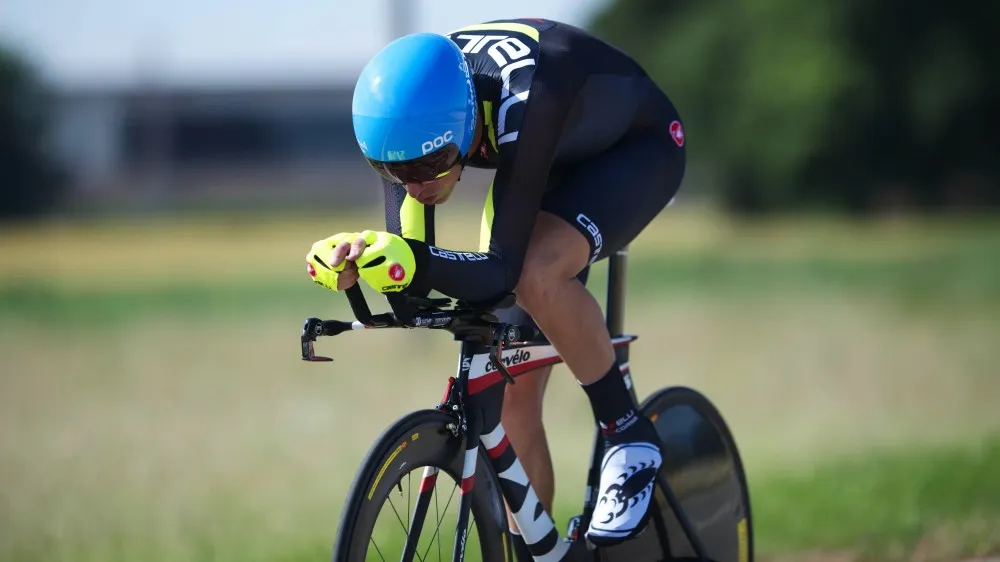
So, I expect you are thinking at this stage: “If the body is not so good at telling you what actual output you are making, then the power-meter must surely be the perfect answer”?
Yes, it can help, but it is not the complete solution. The increased use of power-meters has made pace control potentially easier but you shouldn’t allow yourself to become a slave to the numbers. Let me give an example of how the use of power meters makes many time-triallists go slower.
If you concentrate on your power output during a time trial, you will naturally tend to do whatever increases your power, which, you think, will increase your speed. One way of increasing power is to raise your height. Looking at the ‘numbers’ all the time may condition you to do this.
However, even rising slightly will compromise your aerodynamics and is likely to slow you down, in spite of higher numbers. It’s an example of technology working against you if not used properly.
We hear too much the primacy of the numbers and this is a major reason why I hope my system will broaden your perspective and help to think and act differently.
Part of the fun and challenge of time trials is to discover how to read your body, and perceive and predict what it’s doing. This can only be done through practicing and rehearsing this. You must also learn through making mistakes and, if you don’t try new things and make some mistakes, you are not testing your limits.
A time trial isn’t just about staring at a screen fixating on digits: it’s about getting as fast as you can from start to finish, and each segment of each different course will require differing tactics, consciously played out according to your particular style and strengths.
Sporting courses – bang for your buck
Many of the time trials I did as a professional were quite technical – ‘sporting’ or ‘roadman’ courses is the term used in the British time trial scene. Many of these were up and down, left and right – not your classic up one side of a dual carriageway and down the other.
These required a different style of pacing and, especially, a better awareness of cadence. As a rule of thumb, in almost all time trials I did, I would try and keep the cadence high (100+rpm) for the first three quarters and then allow it to drop a bit on the last quarter (90-100rpm).
This was because I had a natural tendency to spin. In my early years as a professional I was repeatedly told to use a lower cadence: “Ride a bigger gear, David!” However, whenever I did so I went slower, even though it was thought to be the ‘best’ thing to do at the time. I came into the pro peloton in the era of Bjarne Riis and Jan Ulrich, the ultimate gear-crunchers and, because they were at the top everybody thought that was the best way to do it.
However, being a little singe-minded, I went against the grain and stood by what worked for me – I was convinced my body was simply not designed that way and proved it to myself through experimentation. Then Lance Armstrong came along with his spinning style, which ensured I was no longer judged for my love of high cadence.
My point here – the same one I’ve been emphasising through this series – is that we are not machines, all built in the same factory to the same spec: you must discover the cadence that works best for your particular genetic makeup.
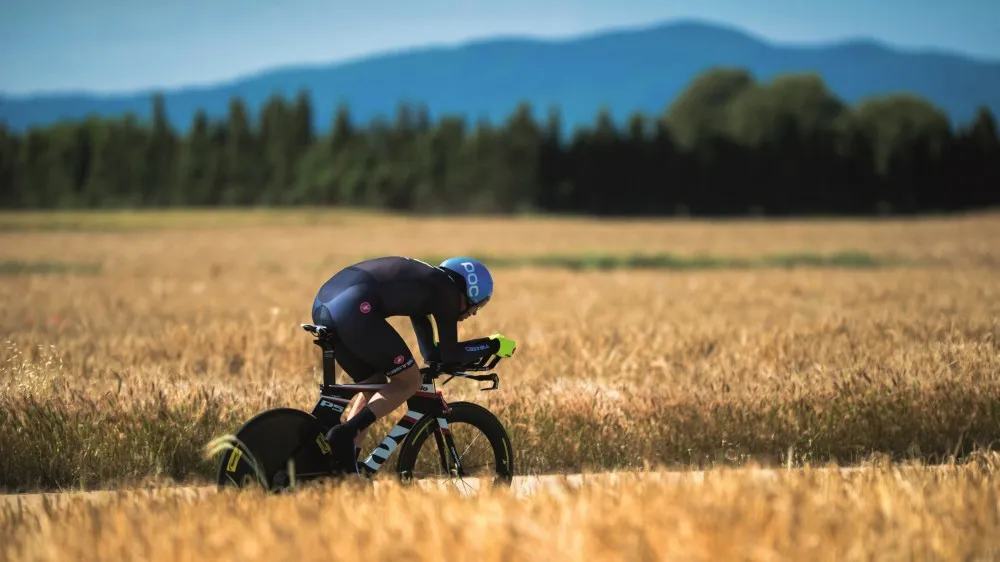
As a rule of thumb, the shorter the time trial, the higher the cadence as you’ll be putting out more power. Think of a car engine: when it’s going at its fastest and sounds its sweetest, it’s revving high. We’re much the same. When I eventually broke the record on the Longwick 10, I averaged 104rpm cadence.
This high cadence isn’t as efficient for longer time trials (over an hour) as it will burn too much energy, just as a car won’t sit on its redline for a long drive as it will burn too much fuel, and whatever time you save you’ll lose on having to stop to refuel.
When you reconnoiter your course and start breaking it into segments, one of main aspects to pick out are the uphill and headwind sections. You can treat these similarly from the tactical point of view because they will slow you down, and understanding the relationship between speed and effort is crucial. More accurately, I should say the relationship between airflow over your body and effort.
Timing your efforts for flat vs. hilly courses
Resistance to airflow is by far the biggest hindrance to speed, but that increase in speed is not directly proportional to increase in resistance. In fact, the increased resistance is exponential, which means that the faster you go, the more wind resistance you experience per watt of output.
The simplest way of looking at this is that you get more bang for your buck (or seconds per watt of output) when going slower than when going faster. Therefore, it makes sense to make a little more effort when you are going slowest (uphill or headwind) and a little less when going fastest (downhill or tailwind).
With this in mind, note those headwind or uphill sections where you can afford to go slightly into the red and over your threshold, because this is where you can gain most time. You won’t be able to make up the equivalent time with the same effort on the downhill or tailwind section – try attacking one of these segments and you’ll find the effort required far outweighs the benefits in increase of speed.
On flat or gently rolling courses, it’s safer to keep a steady continuous effort. You can use the same strategies described above if there is a false-flat uphill or headwind section, but if there are no clear recovery segments then you shouldn’t allow yourself to go so deep.
I could write about this for hours, giving different tactics for different courses and examples of some of my best time trials where I used slightly outside of the box strategies. However, I think it’s best if I don’t overload you with too much information, and that you start absorbing the insights I’ve given. Then, based on these, start working out how you would race the course you’re targeting – that’s part of the fun of time trialling.
Over the remaining two blog posts I’ll get into that element of my system which you probably thought was the most important before beginning this series – developing the engine. Please check back for that.
The ‘David Millar TT System’ gives a roadmap to all riders on how to improve their time trialling. The system isn’t a strict set of rules on how to do it ‘right’, or an argument for purchasing an expensive list of equipment. Because every rider is unique, Millar’s system reveals how everybody can unlock their full potential and become the best time triallist they can possibly be.
